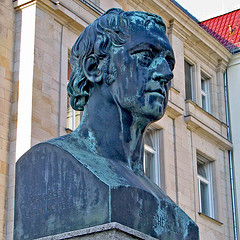Jun 9, 2010 11
The Web of Intentions
 John Battelle recently pointed out that Google is compiling a Database of Intention (strictly speaking, he pointed this out back in 2003).
John Battelle recently pointed out that Google is compiling a Database of Intention (strictly speaking, he pointed this out back in 2003).
Said database is comprised of every search ever entered, every list of results every tendered, and every click-path thereafter taken. Referring to AdWords, AdSense, and Omniture, he additionally pointed out that an ecosystem had blossomed around this pure, though recently attenuated, signal.
One implication/assumption of his insight: Wherever we feel that humans are expressing intent, business(es) will grow.
To put it another way: When I know what you want to do, I can make money by facilitating the accomplishment of that need.
Although there were some who disagreed with Battelle, the many comments on the post demonstrated the concept’s potential primarily by playing with it. For example, some said the Web also constitutes a database of “What I’m listening to” or “What I’m eating” or “What I just saw.” Furthermore, someone also pointed out that all the commercial information on the web – “What I actually bought” – significantly completes the intention picture by capturing which intentions actually led to thing businesses care about most: realized revenue.
This all took me back to 1995 when I was teaching Hegel to Middelbury students and told them that the world wide web was the true realization of Hegel’s “Phenomenology of Mind” because, in the totality of the web, Spirit (“Geist” or “Mind”) represented itself to itself in an unprecedented manner. (In his characteristically grandiose fashion, Hegel had implied that this self-representation was happening in his book.)
The web is the medium of our lives and increasingly a medium where fusion overcomes immersion. As such, the Web doesn’t just archive what we’re looking for; it archives much of what we actually do. Not just, “This is what I said,” but, “This is what I’m saying.” Not just, “This is what I saw,” but, “This is what I’m seeing.” Not just, “This is what I thought,” but, “This is what I’m thinking.” Etc.
Many years ago, I saw some German dudes talking about how private videotapes constituted the greatest recorded catalog of everyday life ever assembled. The web has absolutely superseded that by creating “not just” a database of intention (in addition to a database of videotaped qoutidiana), but a database of consciousness itself.
Any idears how we could make money off that? Wait, somebody already has!
Image Source: quapan.
